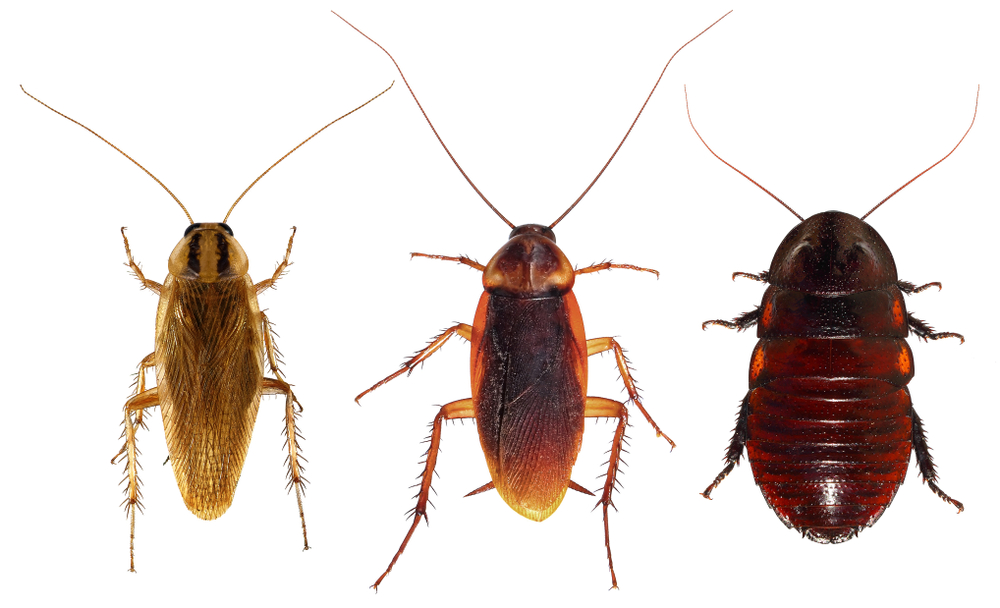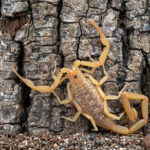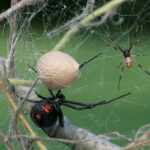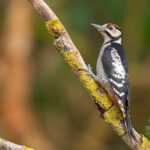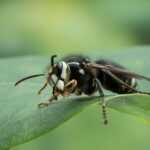Top Types of Cockroaches & How to Identify Them
Wondering what types of cockroaches infest homes? This article covers the most common types of cockroaches and tips to manage them. Knowing these types of cockroaches can help keep your home cockroach-free.
- Four primary types of cockroaches commonly invade homes: German, American, Oriental, and Brown-Banded, each requiring specific management strategies.
- Effective cockroach control involves a combination of sanitation practices, exclusion techniques, and insecticidal baits to manage and prevent infestations of these types of cockroaches.
- Professional pest control services can provide comprehensive solutions for severe infestations of various types of cockroaches, utilizing Integrated Pest Management (IPM) for more effective outcomes.
Common Cockroach Species in Homes
Homes are often plagued by four primary cockroach species: the German cockroach, American cockroach, Oriental cockroach, and Brown-Banded cockroach. Each of these species has unique characteristics and preferred habitats, which makes identification and control a nuanced task.
Knowing these common cockroach species is crucial for effective control. From the light brown, striped German cockroaches often found in kitchens and bathrooms, to the large, reddish-brown American cockroaches lurking in basements, each species presents its own challenges and requires tailored strategies for management.
German Cockroach
The German cockroach is one of the most notorious indoor cockroaches. Light brown in color with two dark stripes behind the head, these pests are typically about half an inch long. They thrive in warm, humid environments and are commonly found in kitchens, bathrooms, and other food preparation areas.
A single female German cockroach can produce up to 40 eggs in one egg case, leading to rapid German cockroach populations if not controlled. Controlling this species usually requires a mix of different pesticides for effective management and monitoring.
American Cockroach
The American cockroach is a formidable adversary due to its size and longevity. These reddish-brown giants can grow up to 3 inches long, making them the largest common cockroach species found in homes. They are typically found in damp, dark areas like basements, sewers, and steam tunnels.
With a lifespan that can extend up to 700 days, American cockroaches have ample time to reproduce and spread. Producing over 800 offspring annually, early detection and intervention are vital to preventing severe infestations.
Oriental Cockroach
Oriental cockroaches, often referred to as “water bugs,” are easily recognized by their shiny black or dark brown appearance. These cockroaches prefer cooler, damp environments and are commonly found in basements, sewers, and other moist areas.
Development from egg to adult takes about 18 months for Oriental cockroaches, and they move slower than other species. Female Oriental cockroaches can produce around 15 eggs in each egg case, contributing to a steady but slower population growth compared to other species.
Brown-Banded Cockroach
The Brown-Banded cockroach is distinct with its dark brown body and two lighter bands across its wings. Males are typically golden orange with a broad dark band, while females appear darker with lighter bands. These brown-banded cockroaches prefer warmer environments and are often found in elevated areas like ceilings and light fixtures.
Brown-banded cockroaches are nocturnal and most active at night. They thrive at temperatures around 80 degrees Fahrenheit and prefer starchy foods. Control measures frequently include strategically placed baits to target their hiding spots.
Lesser-Known Cockroach Species
Beyond the common household invaders, there are lesser-known cockroach species that also pose challenges. Knowledge of these species is key for thorough pest management.
These lesser-known species, such as the Smoky Brown cockroach, the Pennsylvania Wood cockroach, and the Turkestan cockroach, each have unique behaviors and habitats that require specific control strategies. Knowledge of these species expands our ability to address cockroach infestations effectively.
Smoky Brown Cockroach
The Smoky Brown cockroach is a dark brown to black species that thrives in humid outdoor environments. These cockroaches prefer high humidity and heat, making them common in areas with consistent moisture.
Smoky Brown cockroaches are mainly outdoor insects but can invade homes in search of food and shelter. Their presence often indicates a need for better outdoor pest management to prevent indoor infestations.
Pennsylvania Wood Cockroach
The Pennsylvania Wood cockroach is typically encountered in homes during the spring mating season. They are often brought indoors accidentally on firewood, making firewood storage practices a critical point of control.
These cockroaches prefer outdoor environments but can become a nuisance indoors when they are seeking mates. Their seasonal behavior and accidental introduction highlight the importance of monitoring and managing potential entry points.
Turkestan Cockroach
Turkestan cockroaches are predominantly outdoor species that prefer warm, dry environments. They are attracted to light, which can lead them into homes, especially during their active periods. These cockroaches are about 1 inch long with cream-colored markings behind the head and around short, rounded wings.
Interestingly, Turkestan cockroaches are displacing Oriental cockroaches in regions like Southern California and the Central Valley. Effective control involves perimeter sprays to prevent them from entering homes and managing outdoor environments to reduce their populations.
Signs of Cockroach Infestations
Early identification of infestation signs is crucial for effective management. Cockroaches are nocturnal and tend to hide in dark, secluded areas, making them difficult to spot until the infestation becomes severe.
Recognizing signs like feces, egg cases, and a musty odor can prompt homeowners to act quickly and mitigate the problem before it escalates. Knowing where and how to look can make all the difference in early detection and control.
Cockroach Feces
Feces are one of the most visible indicators of an infestation. Small cockroach feces may resemble coffee grounds or black pepper, while larger varieties may appear as dark, cylindrical pellets. These droppings are often found in areas where cockroaches are active, such as kitchens, bathrooms, and places where food is stored or waste accumulates.
Routine inspections of these areas can help identify infestations early, allowing timely intervention. Cleaning up these droppings also helps reduce the allergens and contaminants spread by cockroaches.
Egg Cases
Cockroach egg cases, or oothecae, are another telltale sign of an infestation. These protective casings harbor the eggs and are often concealed in dark, moist spots around the home. American cockroach egg cases, for instance, are brown when laid but turn black after 1 to 2 days.
Female American cockroaches can produce about 10 egg cases over their lifetime, each containing multiple eggs that will hatch into nymphs. Inspecting and removing egg cases regularly can control the population before hatching.
Musty Odor
A musty odor is often associated with cockroach infestations. This strong, oily, or musty smell is produced by the cockroaches and becomes more pronounced with a larger population. Early identification of this odor can prompt homeowners to act quickly against potential infestations.
The presence of a musty odor typically indicates a severe infestation, requiring immediate and comprehensive control measures to address the problem effectively.
Effective Cockroach Control Methods
Controlling cockroaches effectively requires a multifaceted approach, including sanitation, exclusion techniques, and insecticidal baits. Cockroaches are drawn to food, moisture, and shelter, so addressing these attractants is key to controlling their populations.
Using a combination of these methods helps manage current infestations and prevents future ones. By understanding and implementing these control strategies, homeowners can maintain a cockroach-free environment.
Sanitation Practices
Sanitation is a cornerstone of effective cockroach control. Regularly cleaning floors and promptly washing dishes can significantly reduce the chances of infestations. Removing all sources of food and water before applying baits enhances their effectiveness.
Thorough cleaning of food preparation areas, ensuring no crumbs or spills are left behind, is essential. This reduces the attractants that lure cockroaches into homes.
Exclusion Techniques
Preventing cockroaches from entering and hiding in homes requires effective exclusion techniques. Sealing entry points like holes around pipes can prevent German cockroaches from accessing living spaces. Implementing thorough exclusion techniques helps maintain a cockroach-free home environment.
Sealing potential entry points effectively can significantly reduce the likelihood of an invasion. Regular inspections and maintenance of these seals are crucial for long-term control.
Insecticidal Baits
Insecticidal baits are a powerful tool in controlling cockroach populations. Gel baits, in particular, are effective when applied in small amounts at multiple hiding spots. Strategically placing gel baits in areas where cockroaches are likely to hide can yield the best results.
Baits attract cockroaches to consume the poison, which then spreads through the population as the affected return to their nests. This method is especially useful for managing severe infestations.
Integrated Pest Management
Integrated Pest Management (IPM) combines multiple control methods for effective cockroach management. This approach involves assessing pest behavior and environmental factors to develop a strategic plan that includes insecticides, sanitation, and exclusion practices.
IPM has evolved over the years, with new baits replacing routine baseboard spraying and fogging. Managing resistance to bait products requires switching pesticides every few months, with results noticeable in up to 7 days.
Understanding the different types of cockroaches and how to identify them is crucial for effective cockroach control. From common household species like the German and American cockroaches to lesser-known invaders like the Turkestan cockroach, each species requires specific strategies for management.
By recognizing the signs of infestations and implementing comprehensive control methods, homeowners can protect their homes from these resilient pests. Professional pest control services offer the expertise and tailored solutions needed to manage severe infestations and prevent future problems.
Frequently Asked Questions
Is it worth killing roaches?
It is worth killing roaches, as they carry harmful bacteria that can lead to severe infections and allergies. Taking immediate action upon sighting a cockroach is essential to protect your health and home.
What smell do roaches hate?
Cockroaches are repelled by the scents of peppermint, eucalyptus, lavender, citronella, and cedarwood. Utilizing these scents in your home can effectively deter these pests.
What are the common signs of a cockroach infestation?
Common signs of a cockroach infestation include droppings that resemble coffee grounds or black pepper, egg cases, and a musty odor. Daytime sightings further suggest a substantial presence of these pests.
How can I prevent cockroaches from entering my home?
To prevent cockroaches from entering your home, seal entry points around pipes and ensure proper sanitation by eliminating food and water sources. These measures effectively deter infestations.
What is Integrated Pest Management (IPM)?
Integrated Pest Management (IPM) is a holistic strategy for controlling pests that employs various techniques, such as the use of insecticides, sanitation, and exclusion methods, to efficiently manage pest populations. This approach ensures effective pest control while considering environmental and health impacts.
